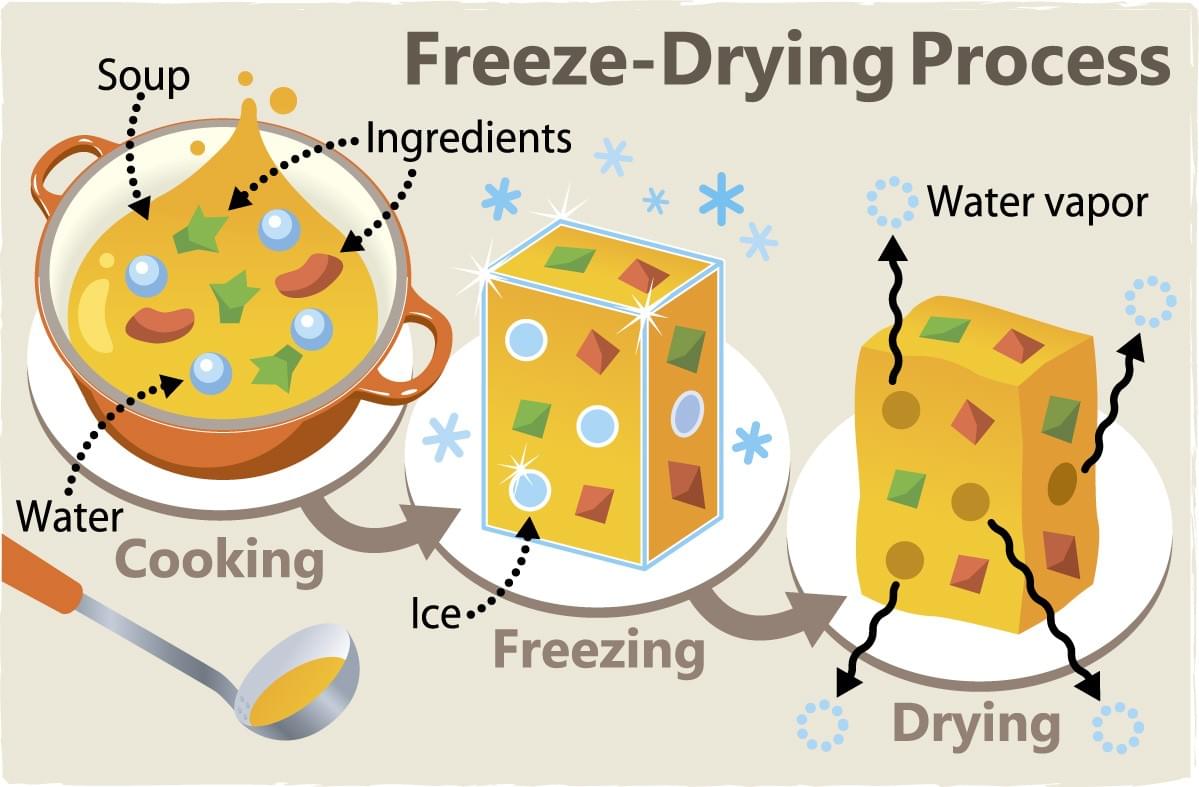Not All "Shelf-Stable" Foods Are Created Equal
In today's fast-paced world, convenience is king. And when it comes to stocking a pantry, many of us lean on shelf-stable options to keep things simple. However, a common misconception is lurking in the aisles: that all preserved foods are equally healthy. Spoiler alert—they're not.
If you're a health-conscious eater (especially if you're plant-based), understanding how your food is preserved can have a massive impact on your nutrient intake. One of the most overlooked—but critical—differences? Freeze-dried vs. dehydrated foods.
They may sound similar, but how they're made and what they deliver to your body are worlds apart. Let's break down these two methods of food preservation and compare how freeze-dried and dehydrated foods differ.
Looking for a convenient, healthy instant miso soup?
How Preservation Impacts Nutrition
Preservation isn't just about keeping food from spoiling; it's also about maintaining its quality.
It also affects:
- Vitamin retention (especially Vitamin C, B1, and B6)
- Antioxidant levels
- Flavor and aroma compounds
- Food texture and rehydration quality
- Nutritional content of the preserved food
The method used to remove water from food—either through heat and airflow (food dehydration) or via sublimation (freeze-drying)—plays a significant role in the quality of the food at the end. While both methods are designed to remove moisture, extend shelf life, and inhibit microbial growth, they are not created equal.
Research suggests that freeze-dried foods can retain up to 90–95% of their original nutrients, while dehydrated foods retain only 50–60%.
source: Naturalyield.com
What Is Freeze-Drying?
Freeze-drying, also known as lyophilization, is a preservation process that removes water from food using cold temperatures and a vacuum.
Here's how it works:

Source: web-japan.org
- First, the food is completely frozen.
- The frozen food is then placed in a vacuum chamber, where, under low pressure, the ice undergoes sublimation and turns directly into vapor without passing through the liquid phase.
- Secondary drying follows, where the temperature is slightly increased to remove any remaining moisture content.
- The process is gentler than heating, resulting in dried foods that better retain their structure, flavor, and nutrients.
Benefits:
- Retains more vitamins, enzymes, and minerals
- Maintains original texture and appearance
- Doesn't require preservatives
- Extremely long shelf life
Real-world example: Tsubi Soup uses freeze-drying to preserve the clean, umami-rich flavors of authentic miso, tofu, seaweed, and vegetables—without the need for refrigeration or additives.
What Is Dehydration?
Dehydration is the age-old process of removing water from food using heat and airflow. It can be done with sun-drying, ovens, or commercial dehydrators.
Here's what it involves:
- Heating food to evaporate moisture
- Typically done at 120°F to 160°F
- Airflow helps carry moisture away
Pros:
- Affordable and easy to do
- Compact and lightweight
- Great for specific uses (e.g., jerky, fruit leathers, herbs)
Cons:
- Heat-sensitive nutrients degrade faster
- Texture becomes chewy or brittle
- Some flavor loss is common
Source: dehydratedcookbook.com
Freeze-Dried vs. Dehydrated: Head-to-Head Comparison
Note: When comparing freeze-dried and dehydrated foods, they differ significantly in nutritional value, moisture content, and rehydration time. Freeze-dried foods rehydrate quickly, often within minutes, while their dehydrated counterparts require longer soaking or cooking. Dehydrated foods have a shorter shelf life due to higher moisture content, while freeze-dried foods have a longer shelf life because of lower water content.
Why This Matters for Your Health
If you follow a plant-based or whole-food lifestyle, nutrient density is everything. Your body relies on every bite to deliver what it needs.
Freeze-dried foods preserve:
- Heat-sensitive vitamins (like B12 and Vitamin C)
- Polyphenols and antioxidants in fruits and veggies
- Enzymes that support digestion
And because freeze-drying doesn't require high heat or added preservatives, the final product is often cleaner, closer to its natural state, and better for your gut.
For Tsubi Soup, this means no need for MSG, artificial flavors, or chemical preservatives—just nourishing miso, tofu, and greens ready in seconds.
Taste, Convenience, and Real-Life Use
Freeze-dried foods aren't just healthier—they're easier to love:
- Instant rehydration: Just add hot water
- Portable: No fridge or freezer required
- Mess-free: No chopping, no cleanup
Perfect for:
- Busy professionals and parents
- Travelers and campers
- Those recovering from illness or with sensitive digestion
With freeze-dried options like Tsubi Soup, clean eating becomes a daily habit—not a hassle.
So... Is Dehydration Bad?
Not at all. Dehydration still has its place: it is a cost-effective method for producing non-perishable foods. It's ideal for:
- Preserving herbs from your garden
- Making DIY trail mix or fruit chips
- Creating long-lasting snacks on a budget
But when it comes to preserving full meals or protecting sensitive nutrients? Freeze-drying is the clear front-runner.
Rethink Your Pantry
Choosing between freeze-dried and dehydrated foods isn't about good vs. bad. It's about what supports your lifestyle and health goals.
If you're prioritizing:
- Clean labels
- Nutrient retention
- Flavor and convenience
...then freeze-dried is worth your attention.
Tsubi Soup chooses freeze-drying for a reason: because busy, health-conscious eaters deserve real nourishment without compromise.
Curious What Freeze-Dried Can Really Taste Like?
Try one of Tsubi's vegan miso soup cubes—crafted with real ingredients, freeze-dried at peak freshness, and ready in under a minute. No fridge. No fillers. Just delicious, nutritious soup made simple.
Or dive deeper: check out our guides on the health benefits of miso, gut-friendly ingredients, and plant-based pantry staples.

